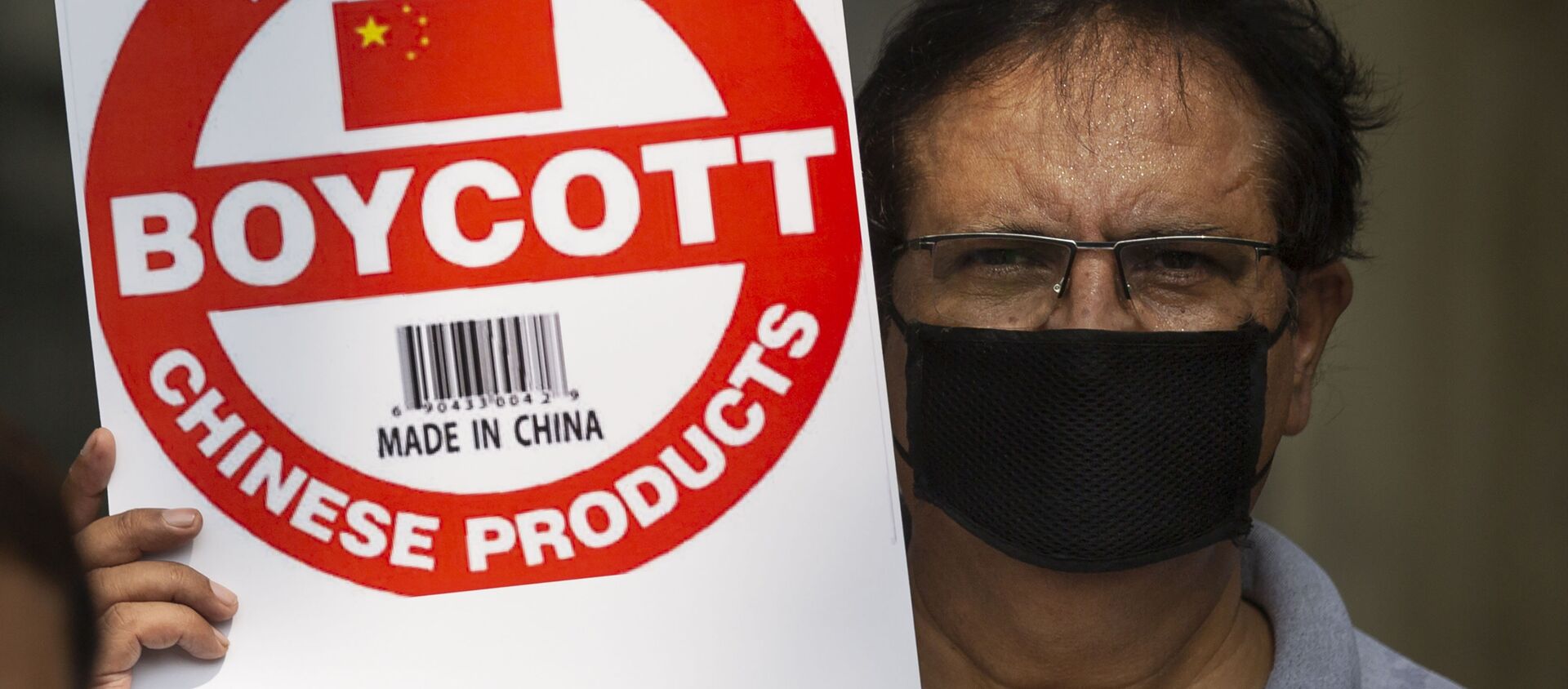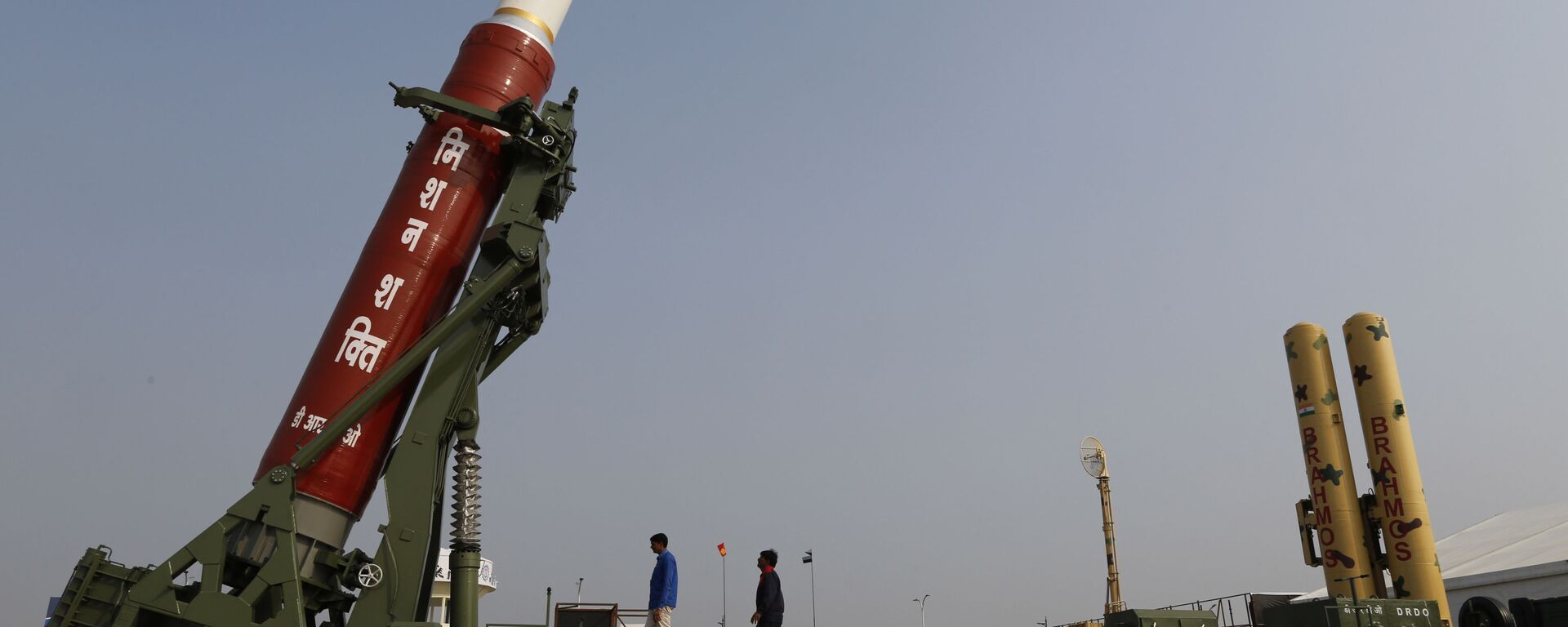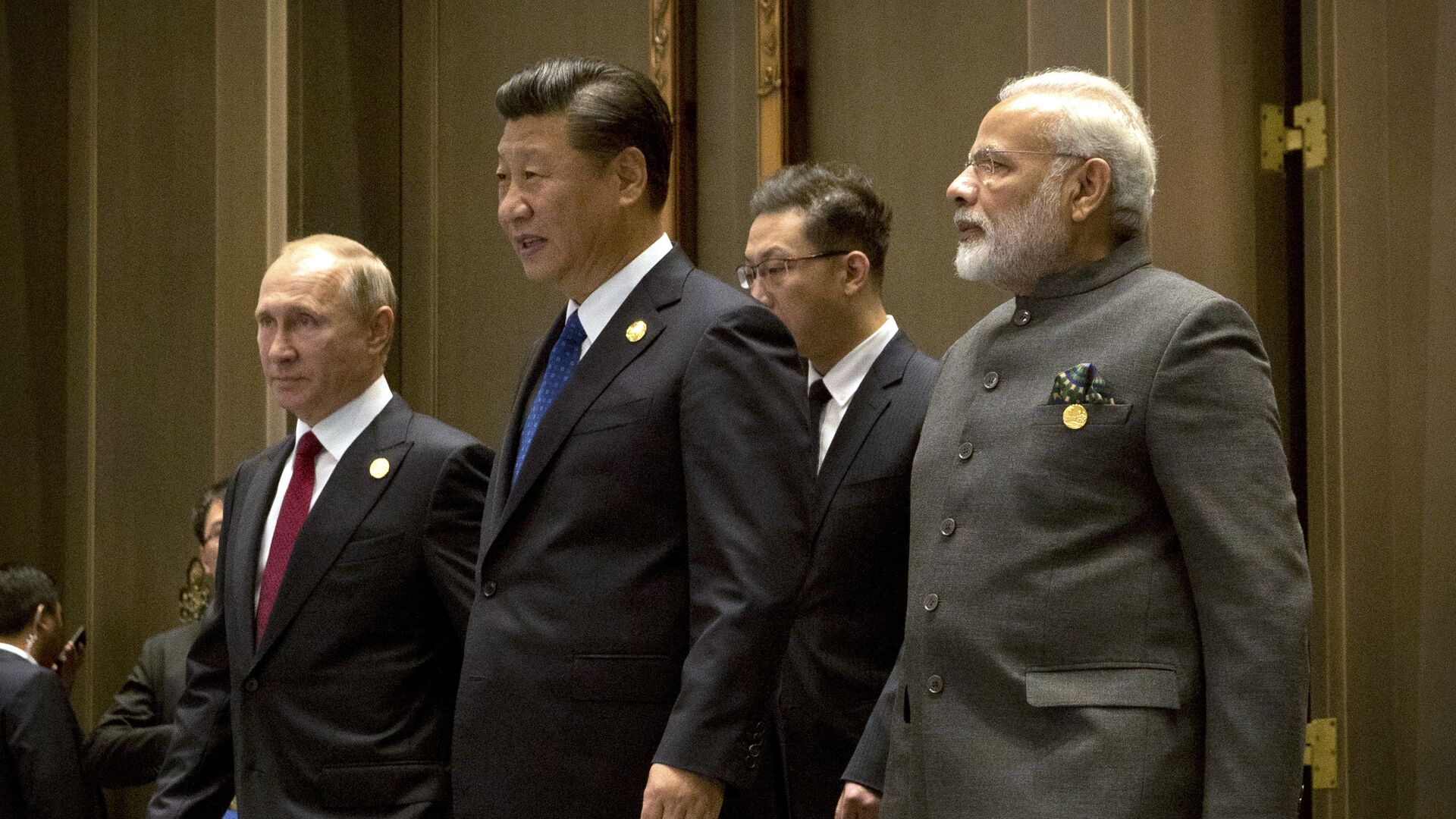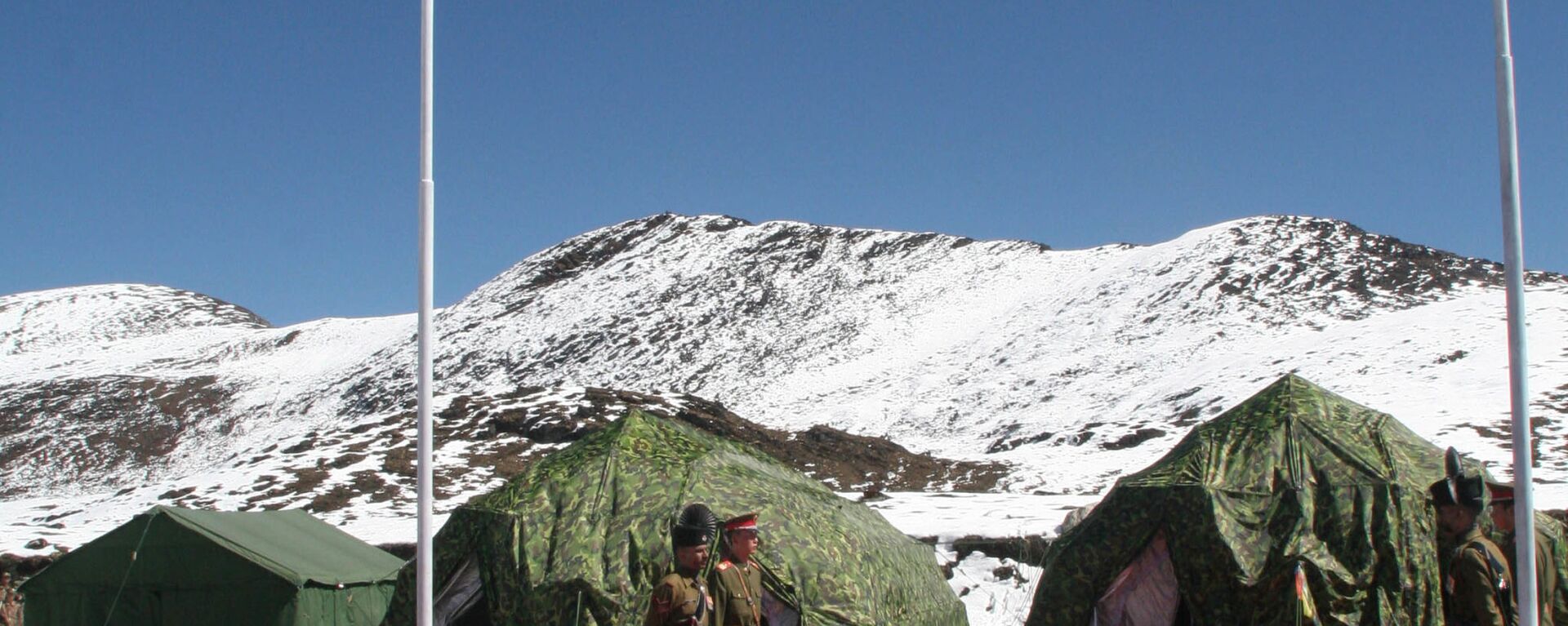https://sputnikglobe.com/20210909/brics-india-pledges-to-boost-trade-tech-ties-with-china-amid-ladakh-border-standoff-1088911089.html
BRICS: India Pledges to Boost Trade, Tech Ties With China Amid Ladakh Border Standoff
BRICS: India Pledges to Boost Trade, Tech Ties With China Amid Ladakh Border Standoff
Sputnik International
Despite boycott calls against Chinese products in the wake of the deadly Ladakh border standoff and a set of policy measures aimed at reducing New Delhi's... 09.09.2021, Sputnik International
2021-09-09T11:15+0000
2021-09-09T11:15+0000
2022-07-19T10:39+0000
ladakh standoff
world
narendra modi
https://cdn1.img.sputnikglobe.com/img/106446/53/1064465397_0:96:3566:2102_1920x0_80_0_0_917a1528b72693ef111c6bc61d0bee27.jpg
The BRICS nations have finalised the "Mutual Customs Assistance Agreement" in a bid to boost trade among the five member countries—Brazil, Russia, India, China, and South Africa—ahead of the annual summit on Friday, Indian officials have told Sputnik.India is the current chair of BRICS, which has a share of 16 percent in the global trade. The current chair of the bloc, Indian Prime Minister Narendra Modi, in 2016 called for increasing intra-BRICS trade.A virtual meeting of BRICS’ trade ministers on 3 September, chaired by India’s federal Commerce and Industry Minister Piyush Goyal, also adopted the Implementation Roadmap on Trade and Investment, as per officials.The intra-BRICS’ measures under India’s leadership are being taken against the backdrop of the ongoing border standoff between the Indian Army and the People’s Liberation Army (PLA) in the eastern Ladakh region along the Line of Actual Control (LAC) border. Indian Foreign Minister Subrahmanyam Jaishankar has told his Chinese counterpart Wang Yi that it can’t be “business as usual” with China until the standoff is resolved.The two foreign ministers have held two face-to-face meetings since the border standoff began in May last year—the first one in Moscow on the sidelines of a Shanghai Cooperation Organisation (SCO) meeting in September last year and then again in Dushanbe in July this year. India has repeatedly accused China of altering the status quo by encroaching upon border territories previously patrolled by India. However, China has denied the accusations on several occasions.Addressing a security conference in January this year, the Indian top diplomat said that the death of 20 Indian soldiers in a clash with PLA troopers in Ladakh’s Galwan Valley region has “profoundly disturbed” trust between the two nations. Four Chinese troops also died during the clash, the deadliest episode between the two nuclear-armed neighbours in over four decades.The Chinese Foreign Ministry has accused India of instigating the standoff and trying to change the status quo by ramping up its border infrastructure. Wang has also called upon India to place the border dispute at an “appropriate” level in the overall bilateral ties.Largely ignoring Beijing’s calls until now, India has been accelerating its efforts to de-couple its economy from China’s in the wake of the border dispute, which remains unresolved to date, even after nearly a dozen rounds of meetings between military commanders of both nations.Since the border standoff began, the Indian government has banned over 200 Chinese apps on “national security” grounds. In April last year, New Delhi also revised its Foreign Direct Investment (FDI) rules to make it mandatory for inflows from China to go through a government screening committee before they could be approved.However, now, under the BRICS framework, India is not only calling for boosting economic activity among member states, but also for enhancing cooperation in space and digital technologies.Indian officials say that the leaderships of BRICS nations will “accelerate cooperation” in remote-sensing technologies for the “peaceful use of outer space”. The Indian government has also floated the idea of a "BRICS Digital Public Goods Platform" to share open source technologies among the member states.India Must Strike a Balance, Says ExpertSeshadri Vasan, the director of Indian think tank the Chennai Centre for Chinese Studies, tells Sputnik that New Delhi, as the current chair of BRICS, “can’t shy away from its responsibility” of effectively leading the multilateral grouping.The think-tanker also feels that India could consider using the BRICS platform to extract concessions from Beijing on issues of concern to New Delhi. India has expressed serious concerns on the Taliban takeover of Afghanistan and called upon the Islamist outfit to not allow Afghan soil to be used by anti-India terror outfits. On the other hand, Beijing has emerged as a crucial partner for the Taliban.As far as cooperation in satellite technology is concerned, Vasan notes India’s “illustrious” track record in the area and says that Delhi can’t afford to cede ground to Beijing.
https://sputnikglobe.com/20210628/india-redirects-50000-troops-to-chinese-border-inaugurates-new-infrastructure-projects-in-ladakh-1083256057.html
https://sputnikglobe.com/20200902/india-bans-118-more-chinese-apps-over-security-concerns-amid-border-tensions-1080348458.html
https://sputnikglobe.com/20210907/lack-of-critical-technology-restricts-indias-anti-satellite-capabilities-admits-iaf-vice-chief-1088856980.html
ladakh standoff
Sputnik International
feedback@sputniknews.com
+74956456601
MIA „Rossiya Segodnya“
2021
News
en_EN
Sputnik International
feedback@sputniknews.com
+74956456601
MIA „Rossiya Segodnya“
Sputnik International
feedback@sputniknews.com
+74956456601
MIA „Rossiya Segodnya“
ladakh standoff, narendra modi
ladakh standoff, narendra modi
BRICS: India Pledges to Boost Trade, Tech Ties With China Amid Ladakh Border Standoff
11:15 GMT 09.09.2021 (Updated: 10:39 GMT 19.07.2022) Despite boycott calls against Chinese products in the wake of the deadly Ladakh border standoff and a set of policy measures aimed at reducing New Delhi's economic reliance on Beijing, the world's second-biggest economy still witnessed its year-on-year exports to India rising by two percent in 2020-21, as per official data released this month.
The BRICS nations have finalised the "Mutual Customs Assistance Agreement" in a bid to boost trade among the five member countries—Brazil, Russia, India, China, and South Africa—ahead of the annual summit on Friday, Indian officials have told Sputnik.
India is the current chair of BRICS, which has a share of 16 percent in the global trade. The current chair of the bloc, Indian Prime Minister Narendra Modi, in 2016 called for increasing intra-BRICS trade.
A virtual meeting of BRICS’ trade ministers on 3 September, chaired by India’s federal Commerce and Industry Minister Piyush Goyal, also adopted the Implementation Roadmap on Trade and Investment, as per officials.
“…we reaffirm our commitment to enhance cooperation in trade in services and, in particular, trade in professional services of common interest”, said a release after the meeting. The five governments have also called for developing “economic cooperation in the field of MSMEs (micro, small and medium enterprises), as they “recognized the importance of comprehensive development of the MSME sector for accelerating” the overall economic growth.
The intra-BRICS’ measures under India’s leadership are being taken against the backdrop of the ongoing border standoff between the Indian Army and the People’s Liberation Army (PLA) in the
eastern Ladakh region along the Line of Actual Control (LAC) border. Indian Foreign Minister Subrahmanyam Jaishankar has told his Chinese counterpart Wang Yi that it can’t be “business as usual” with China until the standoff is resolved.
The two foreign ministers have held two face-to-face meetings since the border standoff began in May last year—the first one in Moscow on the sidelines of a Shanghai Cooperation Organisation (SCO) meeting in September last year and then again in Dushanbe in July this year. India has repeatedly accused China of altering the status quo by encroaching upon border territories previously patrolled by India. However, China has denied the accusations on several occasions.
Addressing a security conference in January this year, the Indian top diplomat said that the death of 20 Indian soldiers in a clash with PLA troopers in Ladakh’s Galwan Valley region has “profoundly disturbed” trust between the two nations. Four Chinese troops also died during the clash, the deadliest episode between the two nuclear-armed neighbours in over four decades.
The Chinese Foreign Ministry has accused India of instigating the standoff and trying to change the status quo by ramping up its border infrastructure. Wang has also called upon India to place the border dispute at an “appropriate” level in the overall bilateral ties.
Largely ignoring Beijing’s calls until now, India has been accelerating its efforts to de-couple its economy from China’s in the wake of the border dispute, which remains unresolved to date, even after nearly a dozen rounds of meetings between military commanders of both nations.
Since the border standoff began, the Indian government has banned over 200 Chinese apps on “national security” grounds. In April last year, New Delhi also revised its Foreign Direct Investment (FDI) rules to make it mandatory for inflows from China to go through a government screening committee before they could be approved.

2 September 2020, 13:21 GMT
However, now, under the BRICS framework, India is not only calling for boosting economic activity among member states, but also for enhancing cooperation in space and digital technologies.
Indian officials say that the leaderships of BRICS nations will “accelerate cooperation” in remote-sensing technologies for the “peaceful use of outer space”. The Indian government has also floated the idea of a "BRICS Digital Public Goods Platform" to share open source technologies among the member states.
India Must Strike a Balance, Says Expert
Seshadri Vasan, the director of Indian think tank the Chennai Centre for Chinese Studies, tells Sputnik that New Delhi, as the current chair of BRICS, “can’t shy away from its responsibility” of effectively leading the multilateral grouping.
“It is up to India to decide how much it wants China to individually benefit from these measures aimed at facilitating trade among BRICS’ states”, argues Vasan.
The think-tanker also feels that India could consider using the BRICS platform to extract concessions from Beijing on issues of concern to New Delhi. India has expressed serious concerns on the Taliban takeover of Afghanistan and called upon the Islamist outfit to not allow Afghan soil to be used by anti-India terror outfits. On the other hand, Beijing has emerged as a crucial partner for the Taliban.
“I believe that India could use the opportunity to its advantage to put its concerns across to China in a host of other things, including border standoff and counter-terrorism”, reckons Vasan.

7 September 2021, 19:39 GMT
As far as cooperation in satellite technology is concerned, Vasan notes India’s “illustrious” track record in the area and says that Delhi can’t afford to cede ground to Beijing.
“If India doesn’t showcase its abilities in satellite technology, then it would surely leave China with lesser global competition”, he says.





